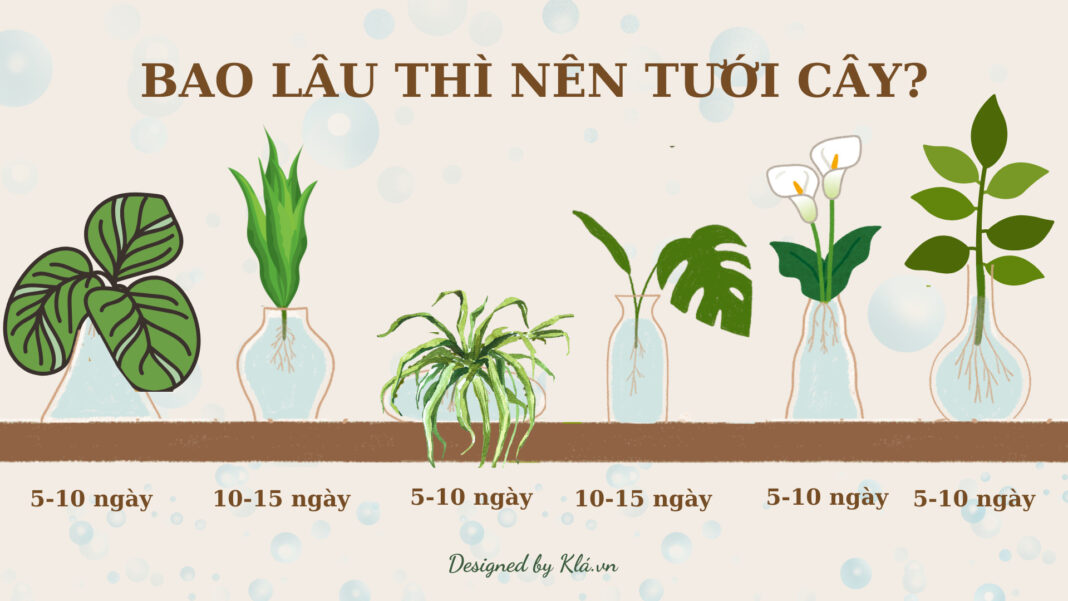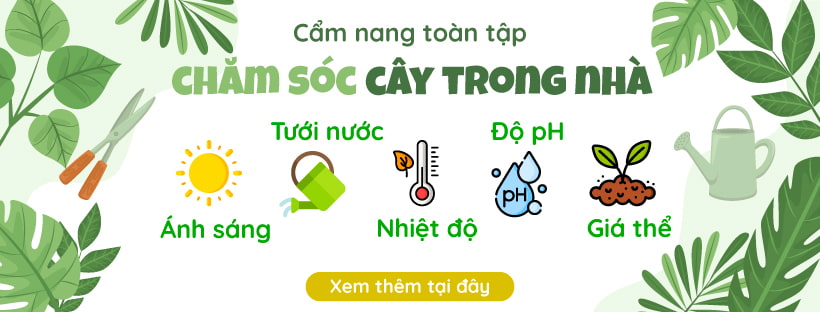Caring for indoor plants and ornamental plants is not just about choosing the right soil or ensuring lightWatering indoor plants is an often overlooked factor, but it actually plays an important role in helping plants grow healthily.
So what to do? You should understand the various aspects of watering your plants, which will help optimize the living conditions for your plants.
The importance of water for plants

Water is the life source of plants, playing the role of transporting nutrients from the soil to the plant parts. In addition, water also helps plants maintain cell structure and carry out the processes of photosynthesis, respiration and metabolism. For indoor plants, controlling the amount of water becomes even more important due to the limited living environment in the pot.
Factors to consider about water for indoor plants
1. Water quality
The quality of irrigation water has a direct impact on the health of the plant. Some notes:
Tap water: Often readily available and inexpensive, tap water contains chlorine and other chemicals that can be harmful to plants, especially sensitive ones. To reduce this effect, let tap water sit out for 24-48 hours before watering to allow the chlorine to evaporate.
Rainwater: The best and most natural choice for plants, rainwater is soft and rich in natural minerals, free from harmful chemicals. However, the ability to collect rainwater depends on the weather and in polluted areas, rainwater can contain harmful chemicals.
Hard water: Contains high levels of minerals such as calcium and magnesium, but can cause salt build-up in the soil and change pH of soil, making it difficult to absorb water. If hard water is required, periodically flush the salts from the soil with rainwater, distilled water, or bottled water.
Filtered water (distilled water): Distilled water is an ideal choice for plants that are sensitive to chemicals, as it contains no chlorine, fluoride, or harmful minerals. However, distilled water lacks natural minerals like calcium and magnesium, and is expensive.
Bottled water/mineral water: Contains natural minerals such as calcium and magnesium, which help plants grow healthily. However, bottled water is expensive and using plastic bottles can pollute the environment.
2. pH of water
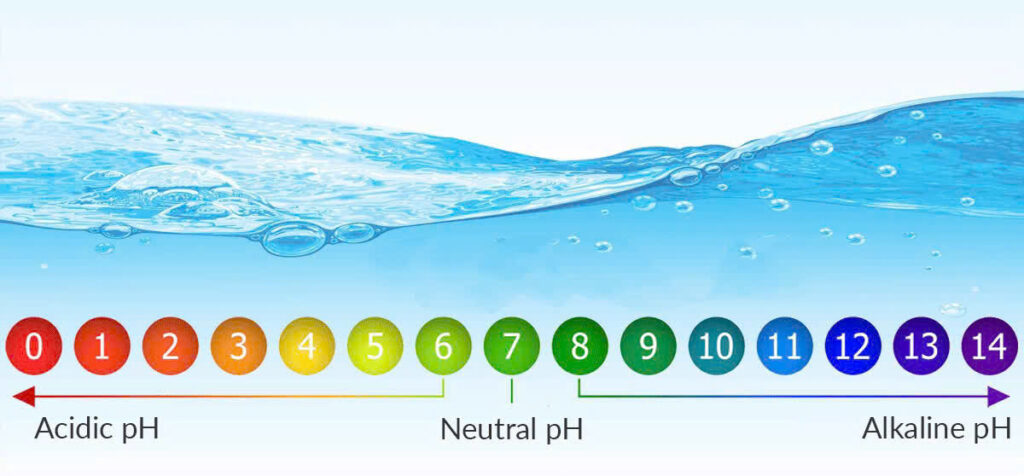
The ideal pH for most houseplants ranges from 5.5 to 7.0.
The pH of the water you use affects your plant’s ability to absorb nutrients. The ideal pH for most houseplants is between 5.5 and 7.0. If the pH of your water is off, your plant may experience “nutrient lockout,” resulting in nutrient deficiencies even though the soil is otherwise healthy.
3. Water temperature
Water for watering indoor plants should have a temperature of about 65-75°F (18-24°C)
Water for watering indoor plants should have a temperature of about 65-75°F (18-24°C), that is, room temperature, as this is the ideal level for plant growth. Water that is too cold can shock the roots, stunt growth, and even cause root rot in some plants, while water that is too hot can damage the roots and foliage. So, for healthy plant growth, always use room temperature water when watering your plants.
Appropriate amount of water
Each type of plant has different water needs. Factors that determine the amount of water include:
- Plant type: Plants like Monstera good Calathea require high humidity, while cacti and succulents need very little water.
- Pot size: Large pots contain more soil, holding water longer, while small pots need watering more often.
- Soil type: Well-draining soil (like cactus potting mix) needs more frequent watering than soil that retains moisture well.
- Môi trường: High temperatures and low humidity cause water to evaporate quickly, requiring more watering.
Effective watering methods
Currently, there are two main ways to water indoor plants:
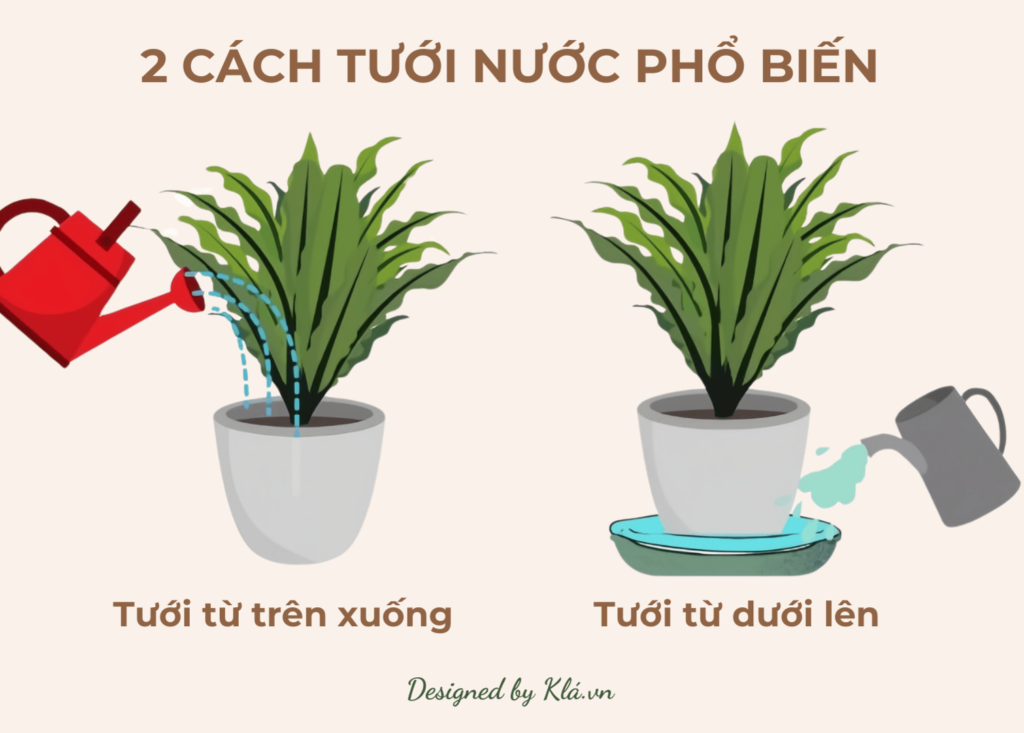
1. Watering from top to bottom
This is the most common method, helping to wash away salts and chemicals accumulated in the soil. When watered, the water will penetrate evenly into the soil, stimulating healthy root growth.
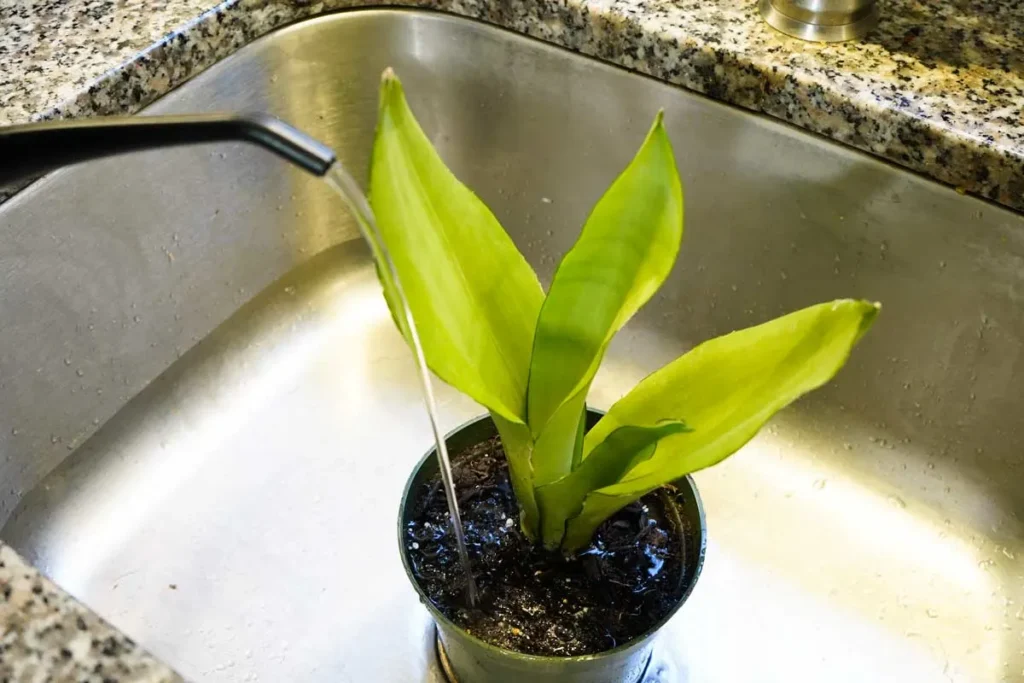
However, make sure that all the water drains out through the drainage holes to avoid root rot. Watering thoroughly and allowing the water to drain out the bottom of the pot helps to ensure that the soil is evenly moistened and provides enough water for the houseplant.
2. Watering from bottom up (Soaking the pot)
This method is suitable for plants that are sensitive to water on their leaves, such as African Violets. Place the pot in a tray of water and allow the water to seep through the drainage holes at the bottom of the pot. This method provides moisture to the soil of your houseplant without wetting the leaves, reducing the risk of fungal or bacterial diseases.

In addition, the misting method will also help increase air humidity, suitable for moisture-loving plants such as Calathea or Fern.

However, misting does not completely replace watering indoor plants, but only helps increase humidity in the environment around the plant. Misting should be done in the morning to allow the leaves to dry during the day, reducing the risk of fungal diseases.
Tip to check if your plants are getting enough water: Use a bamboo stick or skewer to measure soil moisture.
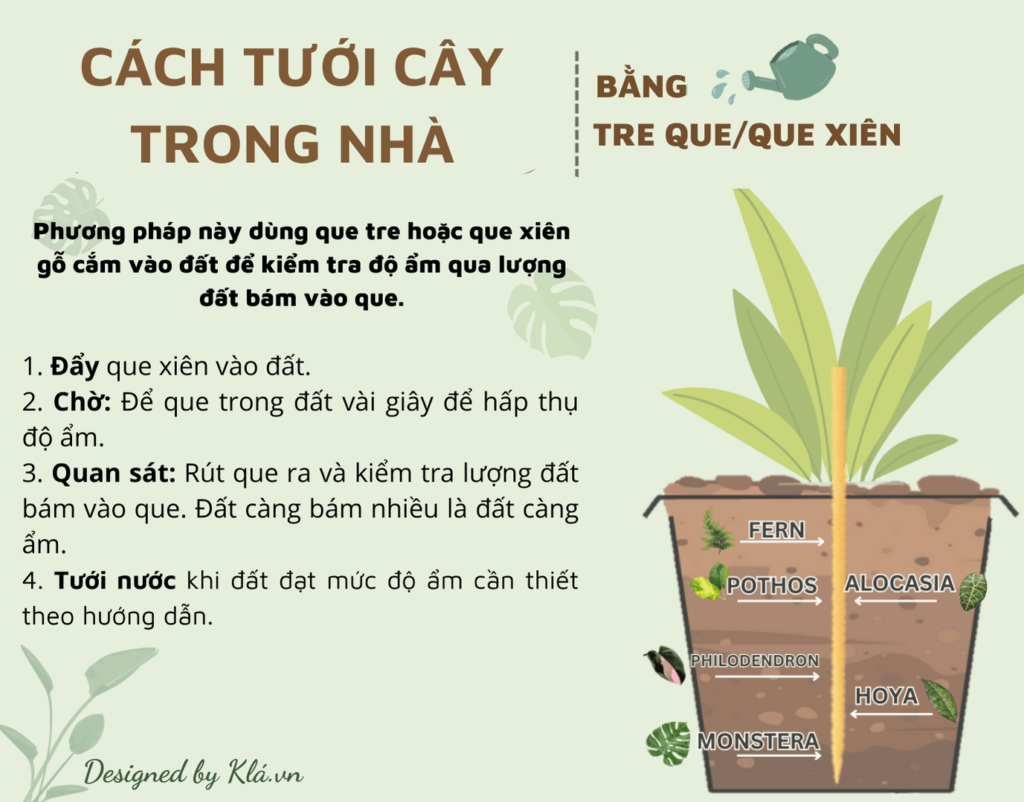
How to tell if a plant has too much or too little water
Overwatered plants
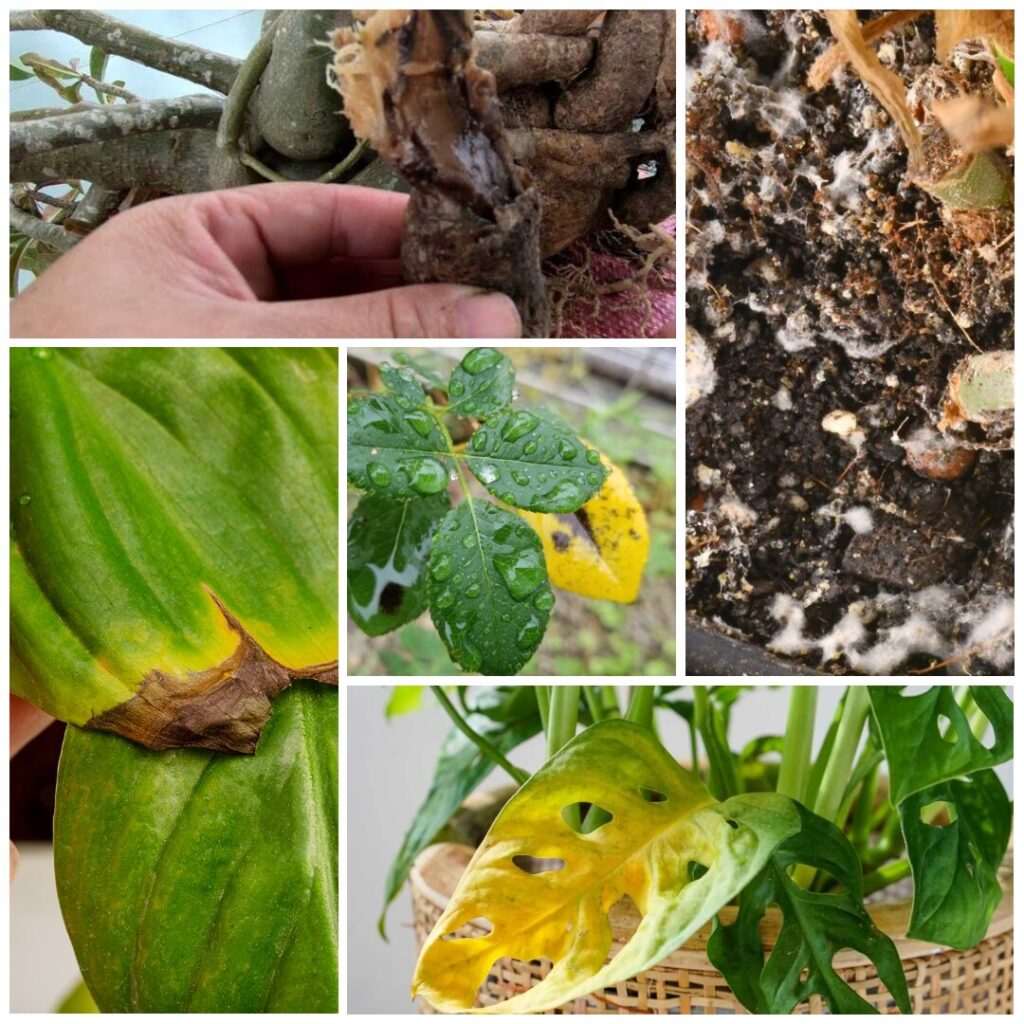
- Yellow leaves drooping, soft, mushy: Leaves (especially new growth) turn yellow and soft, losing their crispness, this is a sign that the plant is overwatered.
- Soft, mushy, fragile roots: If the roots are soft, limp, and mushy when inspected, your plant may have root rot due to overwatering. This can be corrected using hydrogen peroxide.
- Mold: The appearance of mold on the soil surface is a sign of too much moisture or insufficient air circulation.
- Brown, black or yellow spots on leaves: This is a sign of a fungal or bacterial infection caused by overwatering. Use a fungicide and remove affected leaves to treat the problem.
- Fungus gnats: Fungus gnats are common in very moist environments. Control measures such as cut gnats or systemic granules can be used to eliminate the larvae.
Plants are lacking water.
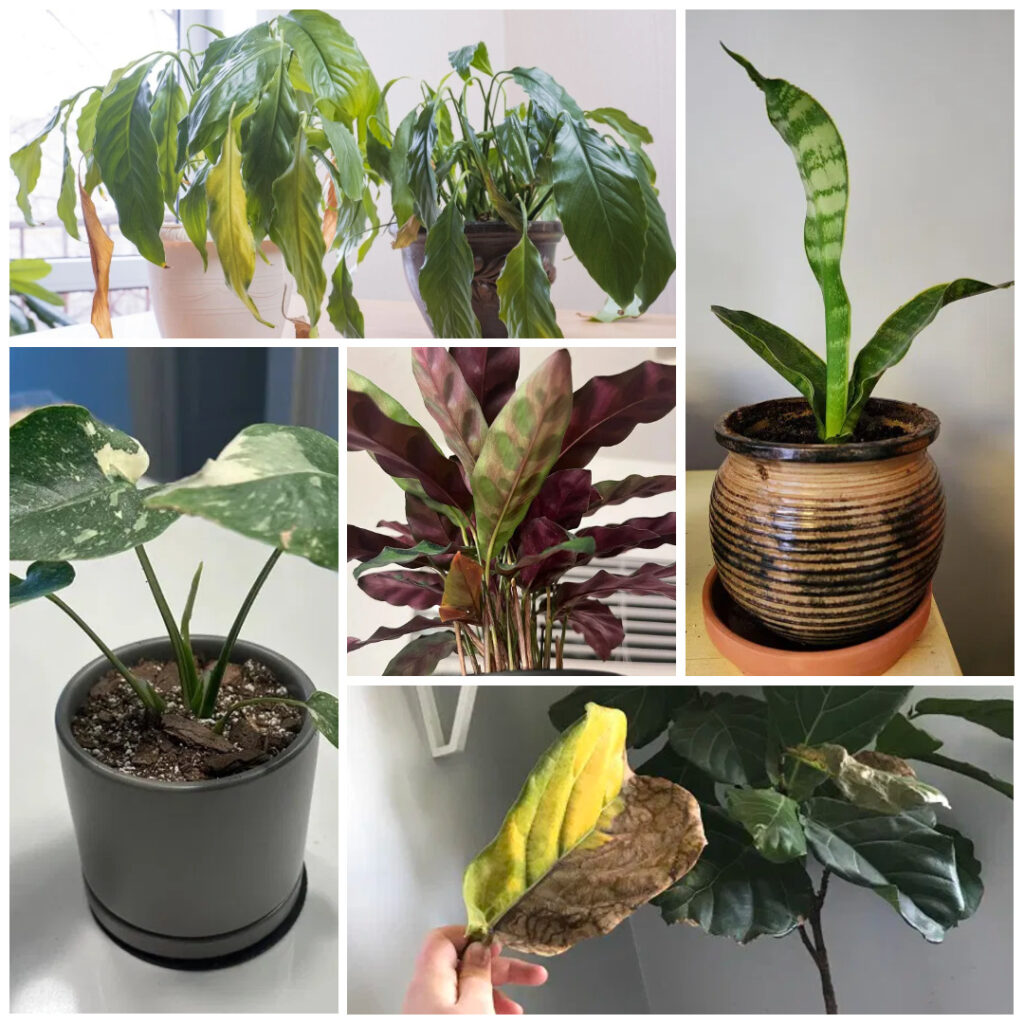
- Wilted leaves: The first sign of a plant lacking water is when the leaves begin to wilt and the entire plant bends. Unlike overwatered plants, underwatered leaves will dry out and become brittle due to the pores (Stoma) close to reduce evaporation. Some plants are susceptible to this phenomenon, such as peace lilies (Spathiphyllum), pothos (Pothos), and trees Oxalis.
- Fallen leaves: Lower leaves are often affected first, becoming dry and discolored, with brown tips, curling and falling off. Plants such as figs and jade plants are susceptible to this condition.
- Slow growth: When there is a lack of water, plants will grow more slowly. If the condition persists, new leaves will be smaller than normal.
- Dry land: Dry, hard soil is the most obvious sign of a plant lacking water. Check the soil and water thoroughly until water flows from the drainage hole at the bottom of the pot.
- Faded color: Leaves may lose color, especially those with variegated leaves. The pattern will fade and the leaves will thin, indicating that the plant is not getting enough water.
What time of day should I water my plants?
The best time to water houseplants is in the morning, before the heat of the day begins, ideally before 10 a.m. This is when the water can penetrate deep into the roots of the plant before evaporating, giving the plant enough moisture to withstand the high temperatures of the day.
If you can't water in the morning, you can water in the evening. late afternoon (around 6-7pm), when the sun has completely set, so that the plants can absorb water before it gets dark. However, avoid watering at noon or late at night to limit negative impacts on plant growth and the risk of fungal growth.
How often should you water your houseplants?
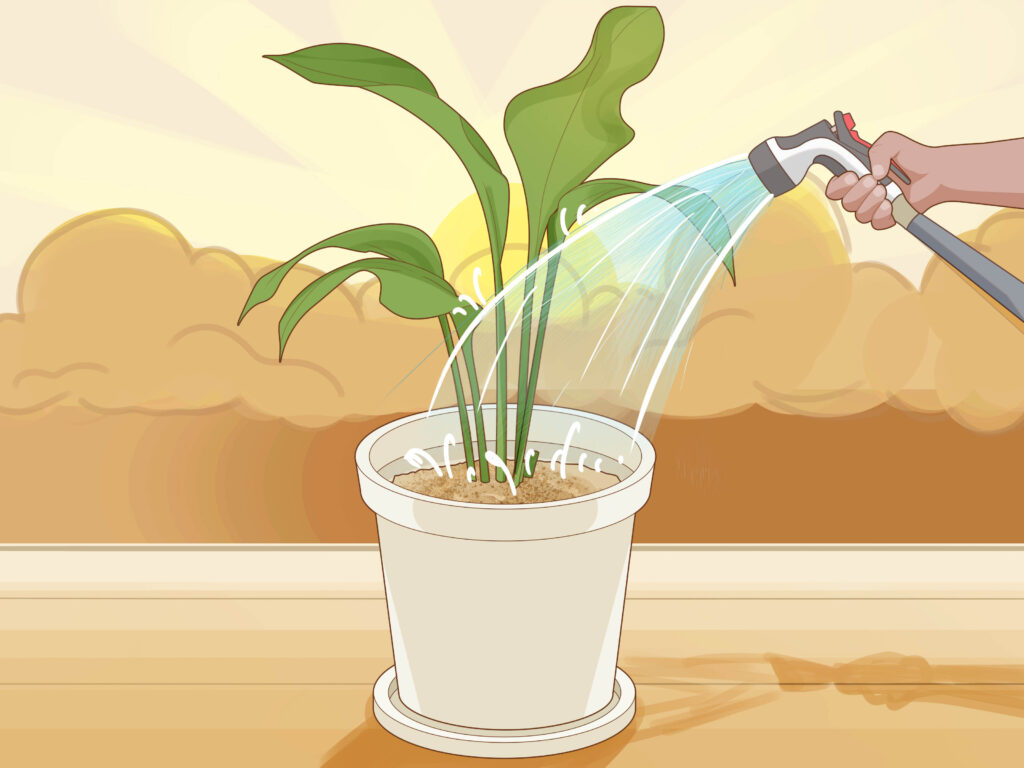
Here are the times to water some common houseplants:
| Houseplants | Ideal watering time |
| Succulents | 10-15 days |
| Rubber plant | 5-10 days |
| Peace lily | 5-10 days |
| Parlor palm | 5-10 days |
| Fiddle leaf fig (Singapore banyan tree) | 5-10 days |
| Peperomia | 5-10 days |
| Spider plant | 5-10 days |
| Calathea (peacock tail) | 5-10 days |
| Snake plant | 10-15 days |
| Citrus tree | 5-10 days |
| Aloe | 10-15 days |
| Orchid | 5-10 days |
| African violet | 5-10 days |
| Ficus | 5-10 days |
| Philodendron | 5-10 days |
| Monstera | 10-15 days |
| Pothos | 5-10 days |
But should you water your houseplants on a schedule? The answer is:
DO NOT WATER PLANTS ON A SCHEDULE!
Many experts argue that watering on a fixed schedule is not the ideal solution, as it can cause plants to receive too much or too little water.
An effective way to determine when to water your plants is to check the soil moisture by pressing your finger about 2cm away: if the soil is dry, it's time to water.

This method works for most plants, except cacti and succulents, which need less water. Some plants, like Spathiphyllum, can wilt with too much or too little water.
You can also check your houseplant's water needs by lifting the entire pot to feel the change in weight. When the soil in the pot is dry, it will weigh significantly less than when the soil is moist.


